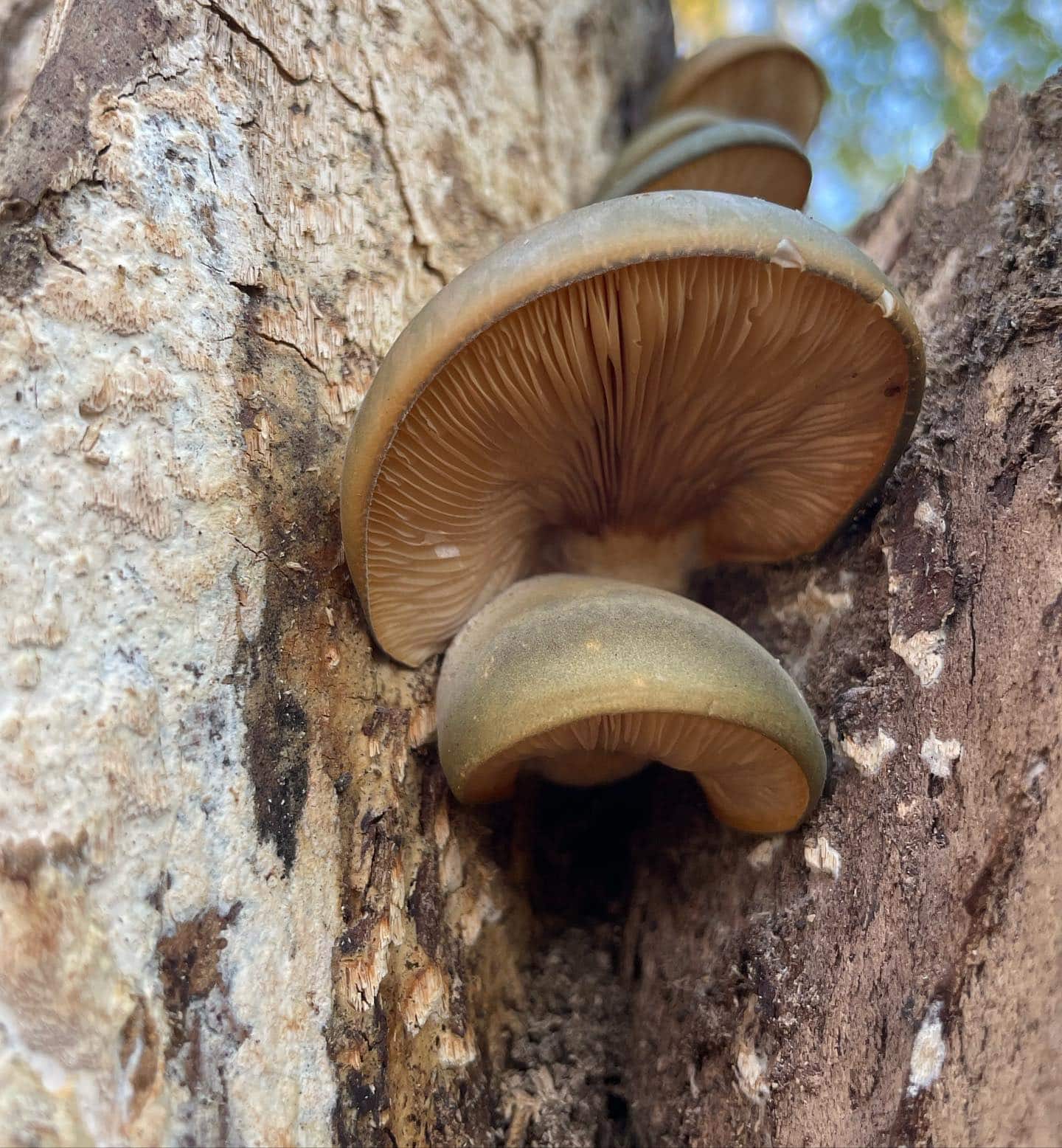Page Created by Connecticut Foraging Club
Upcoming Events | Meet the Instructors | Plant Archive | Mushroom Archive
----------------
Upcoming Events | Meet the Instructors | Plant Archive | Mushroom Archive
----------------
Late Fall Oysters (Sarcomyxa serotina) are easily identified edible mushrooms that can be found October-December.

Late fall oysters can be found on deciduous or conifer logs growing singly or in shelves. They have green, yellow, orange, or purple caps and yellowish gills. There is a line that separates the gills from the stubby stem. The mushroom has a rubbery and tough texture.

Late fall oysters have a mild flavor. A taste and spit test can be used to make sure your mushrooms are not bitter. The mushrooms must be cooked long and slow due to their tough texture. They are great in soups and stews.

Late fall oysters have been shown to have medicinal properties. They can inhibit non-alcoholic fatty liver disease, improve immunity, and suppress tumors.

--
Written by Amy Demers, founder of the Connecticut Foraging Club. To learn more about foraging in Connecticut, check out our upcoming classes.







One Response
I’ve just read through all of the recent posts, and there were a couple things I think the pages could use. A region for which parts of North America they exist in would be cool, since it takes a LOT of convincing for me to get up and go west of the Appalachian Mountains. Any further than that is a yearly thing, maybe. Additionally, one piece of information that is absolutely necessary for a foraging site is *when* the mushrooms are edible. I don’t know if ‘x’ mushroom can be eaten young, or has to be eaten mature, or even after spore-out, but that is critical information especially as there exist mushrooms that are inedible at the wrong stages of growth. Even if they are edible at all stages of growth (or for the prior case, present in the whole of North America), it is best to make that known since plenty of people will jump to conclusions if there is no mention.
It’s still very early (I’m pretty sure that I started reading as one was being uploaded to the site), but this is definitely important info to get out before Springtime as people begin to search for valuable resources on foraging. For me, this is my personal favorite website to give out to people when leading walks through woodland areas and also served as my gateway to foraging as a whole, and I can’t with a clear conscience recommend a site that is missing critical information.